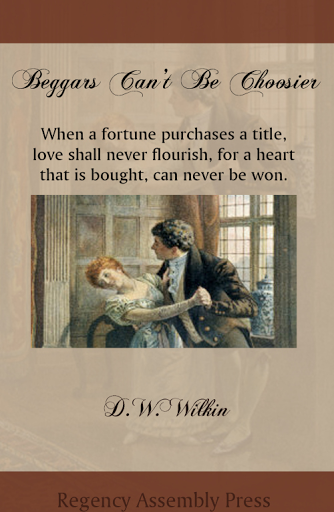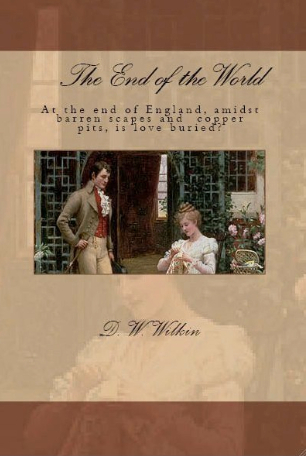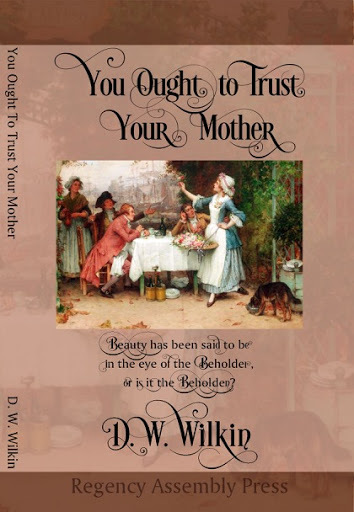D.W. Wilkin's Blog, page 41
July 12, 2016
RAP’s has Beggars Can’t Be Choosier
One of the our most recent Regency Romances.
Beggars has won the prestigious Romance Reviews Magazine Award for Outstanding Historical Romance:
It has also been nominated for the 2015 RONE Awards in the category of Historical:Post Medieval sponsored by InD’Tale Magazine.

It is available for sale and I hope that you will take the opportunity to order your copy.
For yourself or as a gift. It is now available in a variety of formats. For $3.99 you can get this Regency Romance for your eReader. A little more as an actual physical book.
When a fortune purchases a title, love shall never flourish, for a heart that is bought, can never be won.
The Earl of Aftlake has struggled since coming into his inheritance. Terrible decisions by his father has left him with an income of only 100 pounds a year. For a Peer, living on such a sum is near impossible. Into his life comes the charming and beautiful Katherine Chandler. She has a fortune her father made in the India trade.
Together, a title and a fortune can be a thing that can achieve great things for all of England. Together the two can start a family and restore the Aftlake fortunes. Together they form an alliance.
But a partnership of this nature is not one of love. And terms of the partnership will allow both to one day seek a love that they both deserve for all that they do. But will Brian Forbes Pangentier find the loves he desires or the love he deserves?
And Katherine, now Countess Aftlake, will she learn to appreciate the difference between happiness and wealth? Can love and the admiration of the TON combine or are the two mutually exclusive?
Purchase here:Amazon Kindle, Barnes and Noble Nook, Kobo, Smashwords, iBooks, & Trade Paperback
Feedback
If you have any commentary, thoughts, ideas about the book (especially if you buy it, read it and like it
July 11, 2016
Regency Personalities Series-William Collins (Publisher)
Regency Personalities Series
In my attempts to provide us with the details of the Regency, today I continue with one of the many period notables.
William Collins
12 October 1789–2 January 1853
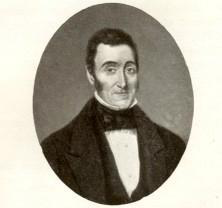
William Collins
William Collins was a Scottish schoolmaster, editor and publisher who founded William Collins, Sons, now part of HarperCollins.
Collins was born at Pollokshaws near Glasgow on 12 October 1789. He was a millworker from around 1800 who established a company in 1819 for printing and publishing pamphlets, sermons, hymn books and prayer books as well as a wide range of office products. He produced the first Collins English Dictionary in 1824, when he also obtained a licence to publish the Bible. In 1856, the first Collins atlas was published. He died on 2 January 1853 at Rothesay, Buteshire.


Conclusion of the Trolling Series-We’ll All Go A Trolling
We’ll All Go A Trolling Not only do I write Regency and Romance, but I also have delved into Fantasy.
The Trolling series is the story of a man, Humphrey. We meet him as he has left youth and become a man with a man’s responsibilities.
We follow him in a series of stories that encompass the stages of life. We see him when he starts his family, when he has older sons and the father son dynamic is tested.
We see him when his children begin to marry and have children, and at the end of his life when those he has loved, and those who were his friends proceed him over the threshold into death.
All this while he serves a kingdom troubled by monsters. Troubles that he and his friends will learn to deal with and rectify. It is now available in a variety of formats.
For $2.99 you can get this fantasy adventure.
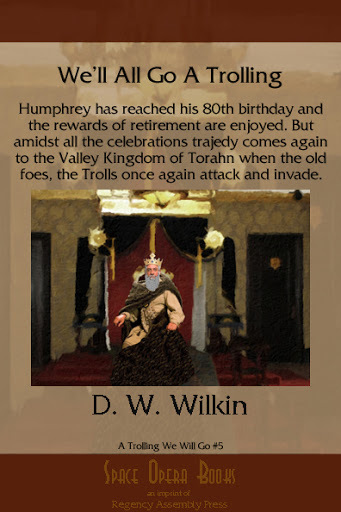
Barnes and Noble for your Nook
King Humphrey, retired, has his 80th birthday approaching. An event that he is not looking forward to.
A milestone, of course, but he has found traveling to Torc, the capital of the Valley Kingdom of Torahn, a trial. He enjoys his life in the country, far enough from the center of power where his son Daniel now is King and rules.
Peaceful days sitting on the porch. Reading, writing, passing the time with his guardsmen, his wife, and the visits of his grandson who has moved into a manor very near.
Why go to Torc where he was to be honored, but would certainly have a fight with his son, the current king. The two were just never going to see eye to eye, and Humphrey, at the age of 80, was no longer so concerned with all that happened to others.
He was waiting for his audience with the Gods where all his friends had preceded him. It would be his time soon enough.
Yet, the kingdom wanted him to attend the celebrations, and there were to be many. So many feasts and fireworks he could not keep track, but the most important came at the end, when word was brought that the Trolls were attacking once more.
Now Humphrey would sit as regent for his son, who went off to fight the ancient enemy. Humphrey had ruled the kingdom before, so it should not have been overwhelming, but at eighty, even the little things could prove troublesome.
Feedback
If you have any commentary, thoughts, ideas about the book (especially if you buy it, read it and like it
July 10, 2016
Regency Personalities Series-Sir Thomas Hislop 1st Baronet
Regency Personalities Series
In my attempts to provide us with the details of the Regency, today I continue with one of the many period notables.
Sir Thomas Hislop 1st Baronet
5 July 1764 – 3 May 1843
Sir Thomas Hislop 1st Baronet was the third son of Lieutenant Colonel William Hislop of the Royal Artillery of the British Army. Like his two elder brothers, Hislop followed his father into the British Army, studying at the Royal Military Academy, Woolwich before joining the 39th Regiment of Foot as an ensign in 1778. Both of his brothers would be killed in action fighting in India, James at the Battle of Pollilur in 1781 and William at Cundapore in 1783. Thomas Hislop’s first combat was during the American Revolutionary War, when his regiment served in the garrison during the Great Siege of Gibraltar. In 1783 at the end of the war, Hislop was promoted to lieutenant and purchased the rank of captain 1785, serving for a month with the 100th Regiment of Foot before returning to the 39th. In 1792 he left his regiment to become an aide to General David Dundas, with whom he participated in the invasion of Corsica at the start of the French Revolutionary Wars. At the capture of San Fiorenzo he was sent to Britain with the despatches, promoted to major and made an aide to Lord Amherst.
In 1795 Hislop undertook a secret diplomatic mission to Germany at the request of the Prince of Wales and was subsequently promoted to lieutenant colonel in the 115th Regiment of Foot, returning to the 39th six months later. In 1796 his regiment was sent to the West Indies, and Hislop participated in the capture of the Dutch colonies of Demerara, Berbice, and Essequibo. After their capture, Hislop remained in the territory as military commander, raising a number of battalions of the West India Regiment. He moved to Trinidad as lieutenant governor in 1802 after the Peace of Amiens. In 1809, as British forces gathered for operations against the French Leeward Islands, Hislop joined them as a subordinate to Lieutenant-General George Beckwith and participated in the invasion of Martinique in February 1809 and the invasion of Guadeloupe in January 1810, commanding a division during the latter operation. He was promoted to major-general, and returned to Britain due to ill-health in 1811.
In 1812, Hislop was made commander-in-chief at Bombay as a lieutenant general and sailed to take up his position in the frigate HMS Java. On 29 December 1812, Java engaged USS Constitution and was captured, Hislop was made a prisoner. During the naval engagement, Hislop had remained on deck and participated in the fighting, and was commended for his service. He was released at Salvador in Brazil and returned to Britain. In late 1814, Hislop finally took up a post in India as Commander-in-Chief of the Madras Army. He was rewarded for his services the same year with a baronetcy and investiture as a Knight Commander of the Order of the Bath. In 1817, the Third Anglo-Maratha War broke out and Hislop was given command of the main British force, numbering 5,500 men. Advancing on 10 November, Hislop defeated the 35,000 strong army of Malhar Rao Holkar at the Battle of Mahidpur on 21 December and then ensured the surrender of the Maratha border fortresses. One fort at Talnar refused to surrender, and Hislop seized the fort and massacred all 300 of its defenders. With the campaign complete, Hislop’s army was dissolved in March 1818. For his leadership in the campaign he was advanced to a Knight Grand Cross of the Order of the Bath.
Hislop’s actions at Talnar came under investigation at the urging of the Governor-General of India, Lord Moira, and as a result he was specifically excluded from the vote of thanks proposed in the House of Commons. He was also embroiled in a controversy surrounding the distribution of the valuables confiscated from the Marathas, known as the “Deccan Prize”. Although Hislop claimed the rewards for distribution among his forces, an alternative claim for a force led by Lord Moira was held as equally valid even though they took no part in the fighting. Despite a political defence of his character by the Duke of Wellington, Hislop was removed from command in 1820.
He remained in India however and in 1822 he married Emma Elliott of Madras. Later in life he served as honorary colonel for the 51st Regiment of Foot and the 49th Regiment of Foot and spent a number of years after his return to Britain as an equerry to Prince Adolphus, Duke of Cambridge. He died at his home in Charlton, Kent in 1843.
His daughter, Emma Eleanor Elizabeth, married William Hugh Elliot-Murray-Kynynmound, 3rd Earl of Minto, in 1844.


RAP (Regency Assembly Press) in need of Beta-Readers
Regency Assembly
Press
is looking for
Beta Readers
One novel is ready for Beta Reading
We have a continuation of Pride and Prejudice with Ms Caroline Bingley and her fortune at stake:
Do we think that Mr Hurst married his Bingley Bride without incentive? It is highly probable that Caroline Bingley, even though she has a sharp, acerbic tongue, still is in possession of a fortune and an astute fortune hunter who deciphers this may soon be on the road to, if not a happy marriage, one with financial security.
Please respond or send an email if you are interested


RAP has The End of the World
The End of the World This is the first of the Regency Romances I published. It is available for sale and I hope that you will take the opportunity to order your copy.
For yourself or as a gift. It is now available in a variety of formats. And now at the reduced price of $3.99 you can get this Regency Romance for your eReader. A little more as an actual physical book.
Barnes and Noble for your Nook
Amazon for your Kindle and as a Trade Paperback
Hermione Merwyn leads a pleasant, quiet life with her father, in the farthest corner of England. All is as it should be, though change is sure to come. For she and her sister have reached the age of marriage, but that can be no great adventure when life at home has already been so bountiful.
When Samuel Lynchhammer arrives in Cornwall, having journeyed the width of the country, he is down to his last few quid and needs to find work for his keep. Spurned by the most successful mine owner in the county, Gavin Tadcaster, Samuel finds work for Gavin’s adversary, Sir Lawrence Merwyn.
Can working for Sir Lawrence, the father of two young women on the cusp of their first season to far away London, be what Samuel needs to help him resolve the reasons for his running away from his obligations in the east of the country?
Will the daughters be able to find happiness in the desolate landscapes and deadly mines of their home? When a stranger arrives in Cornwall while the war rages on the Peninsula, is he the answer to one’s prayers, or a nightmare wearing the disguise of a gentleman?
Feedback
If you have any commentary, thoughts, ideas about the book (especially if you buy it, read it and like it
July 9, 2016
Regency Personalities Series-Francis Eginton
Regency Personalities Series
In my attempts to provide us with the details of the Regency, today I continue with one of the many period notables.
Francis Eginton
1737–1805
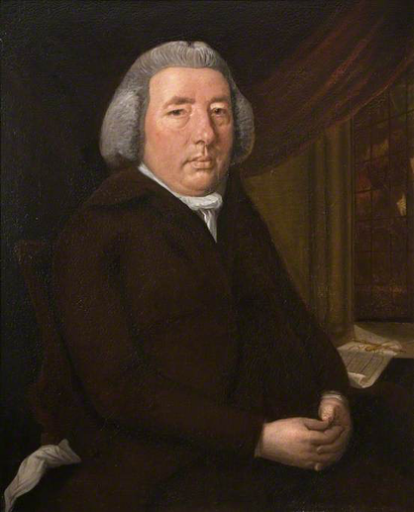
Francis Eginton
Francis Eginton was the grandson of the rector of Eckington, Worcestershire, and was trained as an enameller at Bilston. As a young man he was employed by Matthew Boulton at the Soho Manufactory. In 1764 Eginton was employed as a decorator of japanned wares, but also did much work in modelling. During the next few years Boulton brought together a number of able artists at Soho, including John Flaxman and James Wyatt; and Eginton rapidly became a skilful worker in almost every department of decorative art.
Eginton was a partner with Boulton in the production of “mechanical paintings” or “polygraphs” The idea for these was in all probability taken by Boulton from a process modified by Robert Laurie (1755?-1836) from Jean-Baptiste Le Prince’s ‘aquatint’ engravings. Eginton perfected the method and applied it to the production of coloured copies of paintings. More plates than one were required for each picture, and after leaving the printing-press Eginton finished them by hand. They were copied from the works of Philip James de Loutherbourg, Angelica Kauffman and other artists, and varied in price from £1. 10s. to £21. The largest were 40 inches by 50. They were sometimes mistaken for original paintings, although these old “polygraphs” were in fact nearly identical to the varnished coloured oleographs which later became prevalent, the main difference being that the latter were printed lithographically.
F. P. Smith, then of the Patent Museum in South Kensington, maintained, in a paper read before the Photographic Society of London in 1863, that some of these polygraphs preserved at the museum were actually early photographs . This claim, however was untenable. Pioneering photographer, Thomas Wedgwood, had indeed made experiments upon copying pictures by the action of light upon silver nitrate, but the results then obtained would not have been capable of producing pictures of their size and character. The matter was finally settled by a series of pamphlets written by Boulton’s grandson, M. P. W. Boulton, in 1863-5, in which he gave an account of the whole matter. Furthermore, the leading lithographer Vincent Brooks was able to produce an exact imitation of the “ground” of one of the examples exhibited at South Kensington by taking an impression from an aquatint engraved plate on paper used for transfer lithography.
The “picture branch” of Boulton’s business was discontinued as unprofitable, the loss on this and the japanning trade being over £500 for 1780. The partnership between Eginton and Boulton was dissolved. Lord Dartmouth proposed to grant Eginton a government pension of £20 a year for his work on the picture copying process, but Boulton raised objections and the offer was withdrawn. For the next year or two Eginton appears to have continued to work at Soho, and to have begun in 1781 to stain and paint upon glass. In 1784 he left Soho and set up in business for himself at Prospect Hill House (demolished in 1871), which stood just opposite Soho.
Before Eginton the art of glass-painting had fallen into complete disuse. He revived it and turned out a long series of works in stained glass from his Birmingham factory. His first work of consequence was the arms of the knights of the Garter for two Gothic windows in the stalls in St. George’s Chapel, Windsor, and his other works included:
Salisbury Cathedral (east and west windows, and ten mosaic windows) and Lichfield Cathedral (east window), after Joshua Reynolds,
The east window of Wanstead Church, Essex,
A large representation of the “Good Samaritan” in the private chapel of the Archbishop of Armagh,
A window in the chapel of the Bishop of Derry’s palace,
Memorial and other windows in Babworth Church, Nottingham,
Aston Church,
Shuckburgh Church,
Tewkesbury Abbey Church,
The windows of Merton College chapel, Oxford,
The ante-chapel of Magdalen College.
Eginton painted a window (20 ft. by 10 ft.) representing Solomon and the Queen of Sheba, in the banqueting room of Arundel Castle, and did a large amount of work for William Beckford at Fonthill Abbey, including thirty-two figures of kings, knights, etc., and many windows, for which he was paid £12,000. Much of his work was for export, and some of his best work ended up in Amsterdam. In 1791 he completed what was then considered his masterpiece, the “Conversion of St. Paul”, for the east window of St Paul’s Church, Birmingham, for which he received the “very inadequate sum of four hundred guineas”.
Eginton’s works were, in fact, transparencies on glass. He was obliged to render opaque a large portion of his glass, and thus covered up the characteristic beauty of the old windows. Eginton’s showroom was visited by all distinguished visitors to Birmingham. Lord Nelson, accompanied by Sir William and Lady Hamilton called there on 29 August 1802.
Eginton died on 26 March 1805, and was buried in Old Handsworth churchyard.
His daughter married Henry Wyatt, the painter; his son, William Raphael Eginton, succeeded to his father’s business, and in 1816 was appointed glass-stainer to Princess Charlotte. His brother, John Eginton, was a noted stipple engraver. His nephew, also called Francis Eginton, was also a notable engraver.


You Ought to Trust Your Mother (YOTTYM) now released
Now available the next Regency Romance tale by D.W. Wilkin:
Beauty has been said to be in the eye of the Beholder, or is it the Beholden.
The tale of Baron Fallion Lancelot Stafford, a gentleman of perhaps too much leisure who has served in the wars of some few years before. He now has decided that all this leisure is perhaps a waste and he should be doing something. He was just very unsure what that was.
We also find Lady Beatrice Cavendish, the daughter of the Earl of Hoare who is famed for her beauty, yet cannot find any man who has more to speak to her beyond that one subject. And yet far too many think they should offer for her with only the ardent praise to her looks to recommend them. Perhaps there exists one suitor who could speak on a subject beyond that?
In the rush of the Season of 1821, where their most intimate friends have all come to the conclusion that they should marry, can Beatrice put aside her willful ways and hear sound thoughts that her mama has said on that particular subject? Beatrice was sure that her mother would be content if she accepted the Baron Tweedglen, or any of a dozen other men of good breeding, position, or wealth. Whether they had ought to speak on her attractiveness, and no other words would leave their mouths.
Certainly a marriage with such foundations was doomed to crumble once age advanced and liver spots or wrinkles appeared. Yet amongst the Ton, such marriages were often deemed successes. Would they be so for Beatrice, though? That was something she was destined to apply her own thoughts to.
For Baron Tweedglen, the haunting memory of the war caused him to avoid any reference to his time spent prosecuting that undertaking. Such deamons as consumed his psyche, were magnified as his desire was for a world that art flourished and certainly his experience had been the exact opposite of such an inclination. The Baron was desperately in need of something that could save him from his own self. Was there a remedy in marriage as the entire Ton seemed to believe?
Now available on Amazon for $15.99…
also available for your Kindle and Kindle Reading Apps for $3.99
for those who have iPads, Nooks, or other devices, the book is also available at:
The Apple iBookstore, Barnes and Noble Nook store, Kobo, and Smashwords for $3.99 as well.


July 8, 2016
Regency Personalities Series-Watier’s Club
Regency Personalities Series
In my attempts to provide us with the details of the Regency, today I continue with one of the many period notables.
Watier’s Club
1807-1819
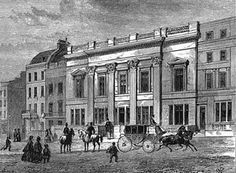
Watier’s Club, 81 Piccadilly
Watier’s Club prior to its occupation as a gaming hall and restaurant, was a private residence, and the headquarters of a small singing club. The Prince of Wales suggested the creation of a club using his new chef, Jean-Baptiste Watier, (who, of course, was the club’s namesake). Amongst the members in the early days were Henry Mildmay, Baron Alvanley, Beau Brummell and Henry Pierrepont.
At the opposite corner of Bolton Street stood, from 1807 to 1819, Watier’s Gambling Club. Concerning the origin of this club—or rather, gaming house, for it was nothing more—the following anecdote is told by Captain Gronow:—”Upon one occasion, some gentlemen of both ‘White’s’ and ‘Brooks’s’ had the honour to dine with the Prince Regent, and during the conversation the Prince inquired what sort of dinners they got at their clubs; upon which Sir Thomas Stepney, one of the guests, observed that their dinners were always the same, the eternal joints or beef-steaks, the boiled fowl with oyster sauce, and an apple tart. ‘That is what we have at our clubs, and very monotonous fare it is.’ The Prince, without further remark, rang the bell for his cook, Watier, and in the presence of those who dined at the royal table, asked him whether he would take a house and organise a dinner-club. Watier assented, and named the Prince’s page, Madison, as manager, and Labourie, from the royal kitchen, as cook. The club flourished only a few years, owing to the night-play that was carried on there. The favourite game played there was ‘Macao.'” The Duke of York patronised it, and was a member. Tom Moore also tells us that he belonged to it. The dinners were exquisite; the best Parisian cooks could not beat Labourie.
Mr. John Timbs, in his account of this club, remarks, with sly humour, “In the old days, when gaming was in fashion, at Watier’s Club both princes and nobles lost or gained fortunes between themselves;’ and by all accounts “Macao” seems to have been a far more effective instrument in the losing of fortunes than either “Whist” or “Loo.”
Mr. Raikes, in his “Journal,” says that Watier’s Club, which had originally been established for harmonic meetings, became, in the time of “Beau” Brummell, the resort of nearly all the fine gentlemen of the day. “The dinners,” he adds, “were superlative, and high play at ‘Macao’ was generally introduced. It was this game, or rather losses which arose out of it, that first led the ‘Beau’ into difficulties.” Mr. Raikes further remarks, with reference to this club, that its pace was “too quick to last,” and that its records show that none of its members at his death had reached the average age of man. The club was closed in 1819, when the house was taken by a set of “black-legs” who instituted a common bank for gambling. This caused the ruin of several fortunes, and it was suppressed in its turn, or died a natural death.
It was at the behest of the Prince Regent, (later King George IV), that Brummell was named the club’s president.
The club carried the affectionate nickname, “The Dandies Club,” which was bestowed by Lord Byron who remarked, “I like the dandies, they were always very civil to me.”
The club had a very short life eventually fading out in 1819, it had become the haven for ‘blackguards’ and fortunes were being lost to a ‘common bank’ that had been set up by a group of members and guaranteed ruin for others.


Space Opera Books Presents Trolling, Trolling, Trolling Fly Hides
Trolling, Trolling, Trolling Fly Hides!
Not only do I write Regency and Romance, but I also have delved into Fantasy.
The Trolling series, (the first three are in print) is the story of a man, Humphrey. We meet him as he has left youth and become a man with a man’s responsibilities.
We follow him in a series of stories that encompass the stages of life. We see him when he starts his family, when he has older sons and the father son dynamic is tested.
We see him when his children begin to marry and have children, and at the end of his life when those he has loved, and those who were his friends proceed him over the threshold into death. All this while he serves a kingdom troubled by monsters.
Troubles that he and his friends will learn to deal with and rectify.
It is now available in a variety of formats. For $2.99 you can get this fantasy adventure.
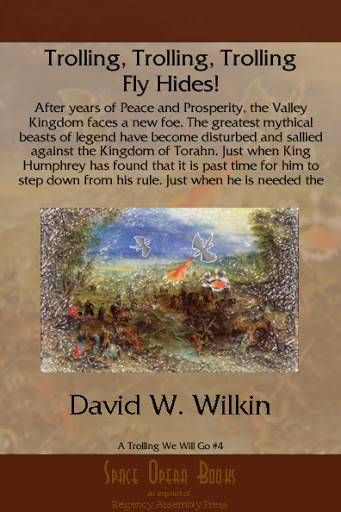
Barnes and Noble for your Nook
Old age is catching up to Humphrey and his friends. He feels it in his bones and with his son and heir having reached the prime of his life, it could very well be time to pass the baton of rule to Daniel.With the Valley Kingdom of Torahn at Peace, that would not be a terrible thing to do. Though breaking his decision to his wife Gwendolyn, the Queen, might be the hardest battle that he ever would fight.
Even as the life of retirement looks to be attractive and possible, however, the Valley Kingdom is beset again. Not Goblins, Trolls, Giants or Men, this time. No. That Humphrey knew would be far too easy.
Those obstacles had been overcome before and the problems they presented had solutions that the army of Torahn was trained to deal with. No, of all the creatures that came forth from Teantellen that they had beaten, the one they had never faced now came forth. Dragons!
Who in the realm knew how to fight these mythical beasts? Was there even away to do so?
Now Humphrey who had thought to spend the remainder of his days quietly writing his memoirs and drinking, was faced with the greatest challenge he had ever known.
Feedback
If you have any commentary, thoughts, ideas about the book (especially if you buy it, read it and like it


